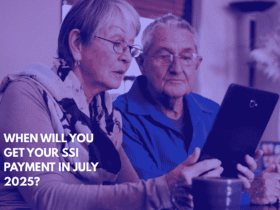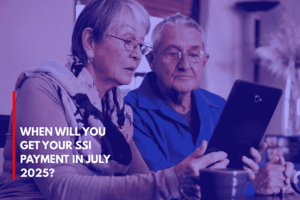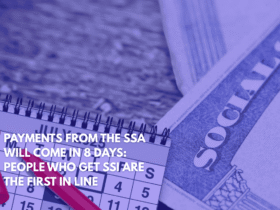In just one day, a significant wave of Social Security payments will hit bank accounts nationwide, with some retirees and beneficiaries receiving up to $5,108. This deposit, scheduled for June 26th, is part of the final scheduled disbursement for June, targeting those whose birthdays fall between the 21st and 31st of the month.
For millions of Americans, Social Security benefits are an essential source of income, and understanding the payment schedule and upcoming changes is crucial.
Social Security Payment Schedule: June and July 2025
Unlike a uniform payday, Social Security payments are distributed based on your birthdate, making the process birthday-driven for most recipients. Here’s a quick breakdown of the payment schedule for June 2025:
Born between the 1st and 10th: Payments arrive on the second Wednesday of the month.
Born between the 11th and 20th: Payments arrive on the third Wednesday.
Born between the 21st and 31st: Payments arrive on the fourth Wednesday, which falls on June 26th.
Looking ahead to July, Social Security payments will be distributed as follows:
July 9th: For birthdays between the 1st and 10th.
July 16th: For birthdays between the 11th and 20th.
July 23rd: For birthdays between the 21st and 31st.
For those receiving Supplemental Security Income (SSI), July payments are scheduled for July 1st.
How Much Can You Expect from Social Security?
Social Security benefits vary based on your work history and when you choose to start collecting. To qualify for retirement benefits, you need to have worked for at least 10 years and be at least 62 years old. While the average monthly check is about $2,000, some individuals could receive significantly higher amounts based on their earnings.
For those who delay claiming benefits until age 70, especially if they’ve earned near the maximum taxable income for at least 35 years, the top monthly payout could reach $5,108 by 2025.
Additionally, survivor benefits provide crucial support to spouses and children. For example, a widow with two dependent children might receive an average of $3,761 per month.
Anticipated Social Security Boost in 2026
In January 2026, all Social Security benefits will receive a boost due to the annual Cost-of-Living Adjustment (COLA). Projections suggest that the increase could be in the range of 2.4% to 2.5%, though the exact figure will depend on inflation data collected later this year.
Important Changes: Paper Checks Ending in 2025
There’s urgent news for those still receiving Social Security paper checks: Starting September 30, 2025, all federal benefit payments, including Social Security retirement, SSDI (Disability), SSI, and even IRS tax refunds, will be delivered electronically. This change is part of a federal mandate aimed at increasing efficiency and reducing the risks associated with paper checks.
Currently, around 456,000 beneficiaries still receive paper checks. These individuals, often vulnerable groups such as seniors, people with disabilities, and those without stable banking options, must act quickly to avoid interruption in their payments.
Why the Shift to Electronic Payments?
The shift to electronic payments is driven by security concerns. Paper checks are 16 times more likely to be lost, stolen, or fraudulently altered compared to electronic transfers. The rise in mail theft—a problem amplified by the pandemic—underscores the security risks associated with paper checks.
What You Need to Do Before September 30, 2025
If you currently receive a paper check, it’s essential to set up an electronic payment method before the deadline. Here are your options:
Direct Deposit: Have your payment deposited directly into a traditional bank or credit union account.
Direct Express® Debit Card: A government-issued prepaid card where your monthly funds are loaded.
Approved Digital Wallets: Link your benefit to secure digital payment services.
Real-Time Payment Systems: Some banks offer faster electronic transfer options.
How to Enroll in Electronic Payments
Online: Visit the official Social Security Administration (SSA) website (ssa.gov).
By Phone: Call 1-800-772-1213 (TTY 1-800-325-0778).
In Person: Visit your local Social Security office.
If you face difficulties accessing banking services or have unique circumstances, reach out to the SSA or Treasury Department to discuss possible exemptions or alternatives.













Leave a Reply